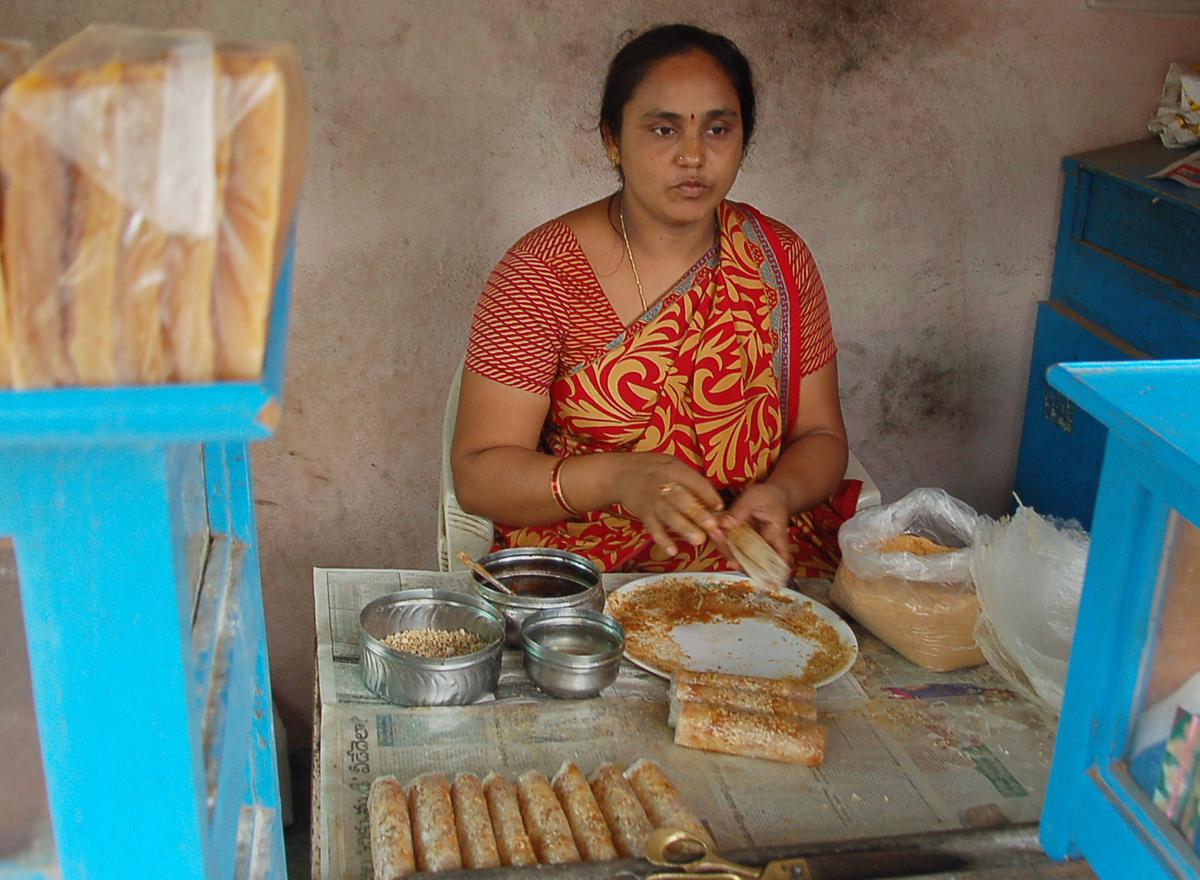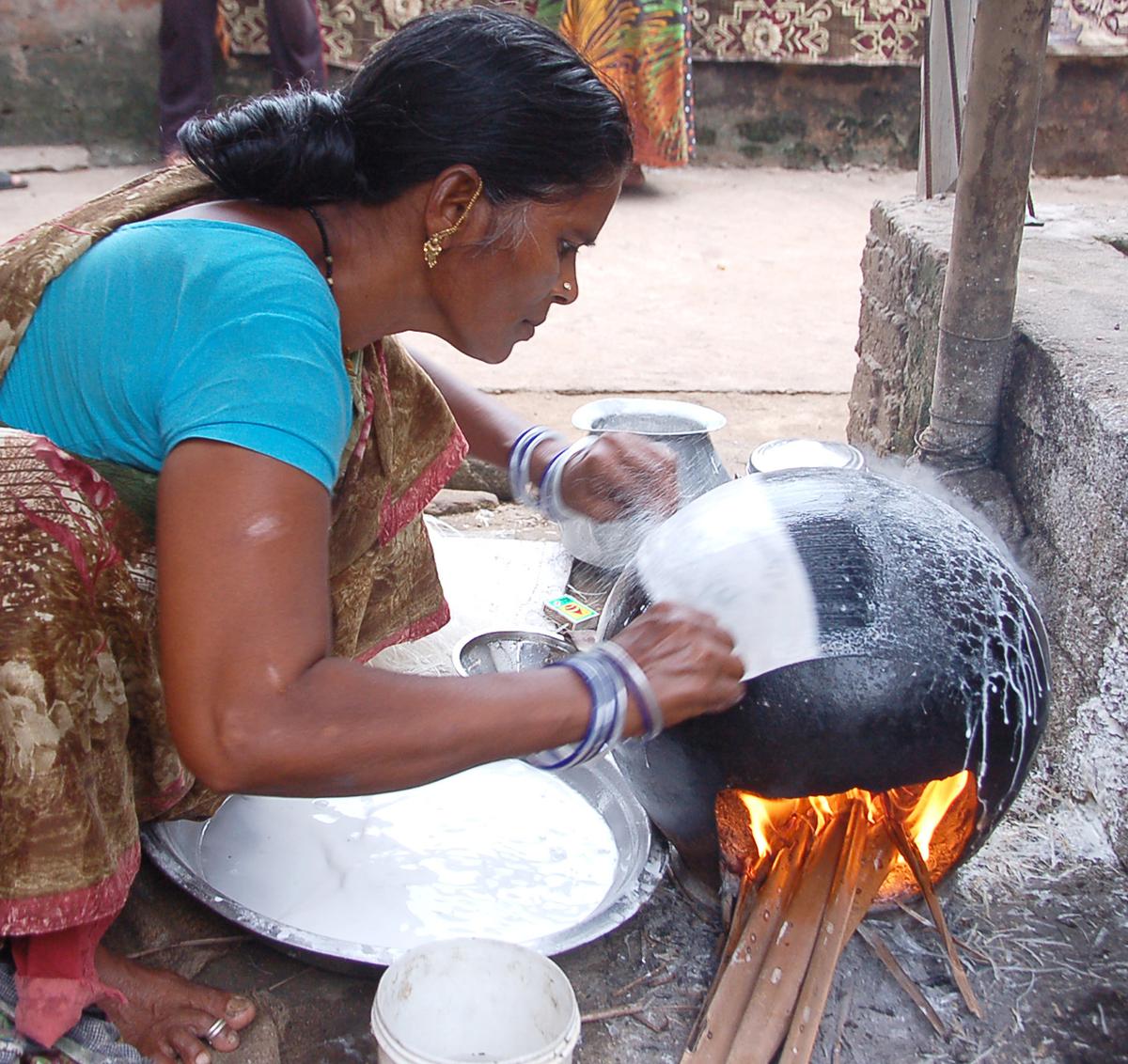Atreyapuram women making pootharekulu
| Photo Credit: Vijaya Bhaskar CH
When the pootharekhulu from Atreyapuram village received the coveted GI tag, under the Food category, it got the rest of the world curious about the dish. The name itself translates to ‘coated sheets’ whcih is a rather vague description of the traditional sweet prepared in Ateryapuram village on the banks of the Godavari river in the Konaseema district of Andhra Pradesh. ight as a feather, the sweet that melts in the mouth comprises paper-thin sheets of rice flour coated with ghee and folded to envelop powdered jaggery or sugar dust. Variants comprising finely chopped roasted dry fruits like pista, almond and cashew are currently popular.
Watch | How is Atreyapuram Pootharekulu sweet prepared?
It is the process that goes into making it that makes the sweet so special. The preparation centres around a specially designed clay pot and a thin rice flour batter of a milk consistency. The MTU-3626 variety of rice, locally known as Bondalu, is preferred for its taste and glutinous nature that gives it a sticky consistency.
Ganesh N from Atreyapuram takes us through the process of making the sheets of pootharekulu.

A woman, Yatam Kanaka Durga, rolling Pootharekulu at Atreyapuram village in East Godavari district
| Photo Credit:
Rambabu S
Coarse rice is washed and soaked in water for two hours. After that the rice is ground in a stone grinder, to with water added intermittently to obtain a batter of milk-like consistency. More water is added to this batter to further dilute it and prepare for the paper sheets.
Highlights
- Haleem from Telangana received the GI tag in 2010
- Khaja from Silao a village in Bihar received GI tagged sweet in 2018.
- Tirupati Laddu received the GI in 2009
Next, a specially designed pot is prepared. This pot has two openings; one regular circular mouth and another at the side. The pot is inverted to rest on the ground on its circular mouth. Through another opening on the neck of the pot, burning dried coconut leaflets are inserted to heat the pot.
Then a fine cloth is dipped in the rice flour batter and deftly spread over the pot in concerntric circles, to coat its entire surface. The heat of the pot dries up the coating in less than 60 seconds, forming a thin crisp white paper-like sheet.
With the colour and texture being critical, the heat of the pot has to be consistently maintained by adding or or removing leaflets from the fire, one at a time.

A making the thin edible films for Pootharekulu at Atreyapuram in East Godavari district.
| Photo Credit:
Special arrangement
Once several sheets are ready, they are assemblied. Two sheets go into making one pootharekhu. One sheet is coated with melted ghee on one side. Then powdered and jaggery or sugar is spread. , Dry fruit powder is added to this. A second sheet is layered on this sheet, smeared with ghee again and then folded in layered to form a rectangular envelope, all by hand.
This is how the women of Atreyapuram have prepared Pootharekulu for centuries.

